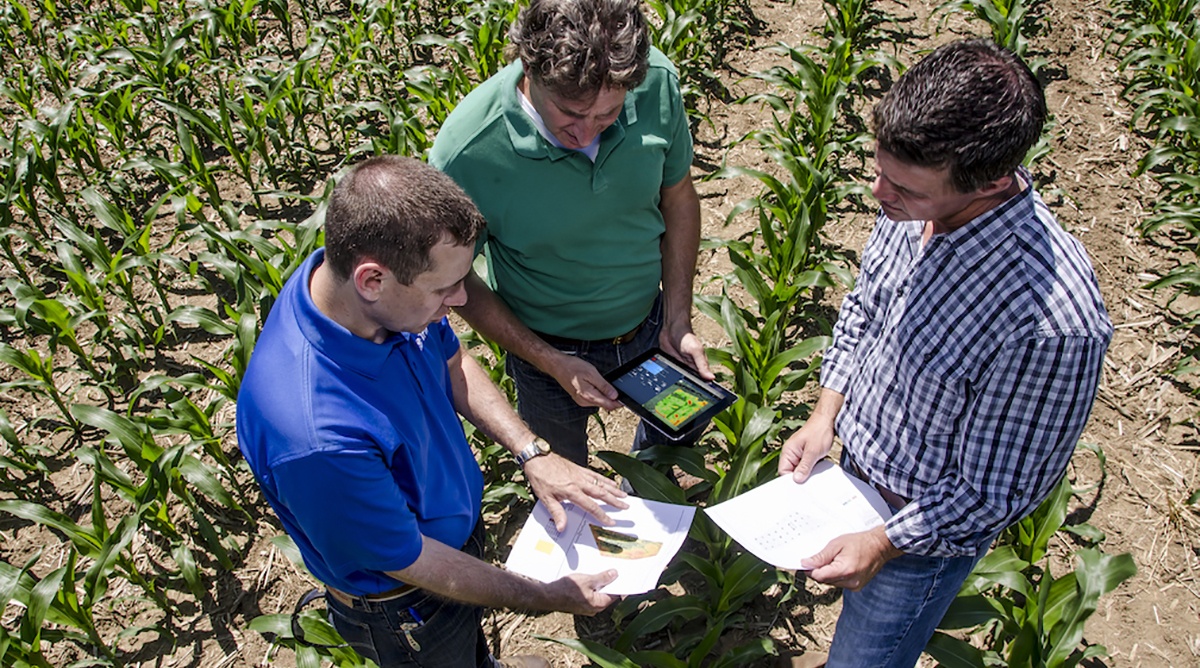Introducing The New Precision Ag Paradigm
December 24, 2016

A 2014 survey of prairie farmers that looked at the Adoption Rate of Precision Farming Practices suggested that, “those who have actually adopted precision farming could be still termed early adopters, if not innovators.”
I would argue that the survey’s creators were not asking the right questions. I believe that a large percentage of you have been practicing precision farming for a while now – if you have a different fertilizer blend for your different crops or you vary that blend by field based on your knowledge of field productivity or if you vary that blend within the field base on your knowledge of zone productivity, you are doing precision management. If you put manure on the hill tops or lime only the low pH areas in the field or put unproductive zones into permanent grass, you are doing precision management. All these strategies put the right management in the right spot, which is my definition of “Precision Ag”.
In fact, I believe previous definitions and incantations of Precision Ag have done farmers a disservice, convincing them that they need all the latest gizmotology to start doing Precision Ag. We need to change the current Precision Ag paradigm of variable rate this or that to one of using holistic zone management strategies that are in-line with farmer’s goal of making a decent living.
Notice there was not one mention of technology in that definition nor I did say “to maximize yield”, we need to grow profitable bushels/acre by focusing on good agronomy. How do we do that? Well first we must recognize that the gizmotology – the maps, monitors, sensors and equipment are all just tools… tools to be welded by the farmer and their coach in a manner that assists in the management of variable yield potential and the growing of profitable bushels. Secondly to grow profitable bushels, we need to start speaking in terms of CPUP or Cost Per Unit of Production. This becomes a universal language as it doesn’t matter if we are talking bushels, tonnes or pecks. It may seem strange for an agronomist to initially focus on a financial consideration rather that some piece of agronomic advice but only if we know the budget we are working within can we allocate or reallocate scarce resources to grow those profitable bushels.
Example 1 is a 57 acre flat-rated irrigated HRS wheat field near Bozeman, MT with a target yield of 140 bu/ac. By looking at just 2 of his expenses – seed and fertilizer, we get an average CPUP of $1.93/unit in this case, bushels.
Example 2 – we recognize that all fields have some degree of variability, so what we want to do is manage this variable yield potential across the field. So with the help of the client, we identified his expected yield range across that field resulting in target yields from 110 to 160 bushels. Now our CPUP by zone ranges from $1.69 to $2.46/bu for this high producing field with very little variability.
Example 3 – what if we had a little more variability, say target yields that ranged from 60 bu in the low producing zones to 160 bu in the high producing zones?
Using the same acreage breakdown as our example field, our average target yield is 122 bu/ac but our average CPUP is now $2.53/bu and if wheat price is still below $5.00/bu, we are close to losing money in Zone 1 before any herbicides, fungicides or additional herbicides are put down.
Knowing this we can now make some educated agronomic decisions to reallocate resources and perhaps reducing inputs here and put it elsewhere in that field or another field. That is putting the “right management in the right spot”.
At the end of the year if we had actuals – yield and product applied + pricing, we could develop “profit maps” where the reality of your decisions really becomes obvious, sometimes painfully.
Creating a budget
My colleague Susan Hodges, Geo-Coach out of Oakesdale, WA takes this notion a step further and includes paying yourself (ROI) in the expense mix. Imagine incorporating an expected Return on Investment (ROI) in your budget; paying yourself first and not just taking what is left over!
By knowing target yields by zone and having an expected return on investment, we can create a budget.
If we use a Target ROI of 8% and a market price of $5.03, we can calculate the maximum allowable expense per bushel using the formula below:
To grow profitable bushels, start at the beginning of the growing season and keep all expenses (eg. seed, chemical, labour & machinery costs) less than calculated MAX CPUP to maintain the set ROI.
Play with the expected ROI and market price based on your knowledge and experience. Keep this spreadsheet update throughout the season to best utilize this information. To be profitable, don’t just track expenses; be proactive and use CPUP to calculations in your whole farm strategy. Expenses can be evaluated AFTER the fact. However, as a Coach and proactive farmer, we want to utilize information BEFORE we make decisions. And in this situation, the information we have can help us budget a maximum cost of production or total expense per acre, getting us closer to our goal of 8% ROI. Locking in a value for ROI will help us secure our whole farm strategy.
To get to profitable bushels/ac, tracking expenses is not an option.
To that end, I look forward to the day when the paradigm shifts and the term “precision ag” disintegrates into just “farming” with an eye to managing variable yield potential to grow profitable bushels/acre by focusing on good agronomy in a way that just makes $en$e.
